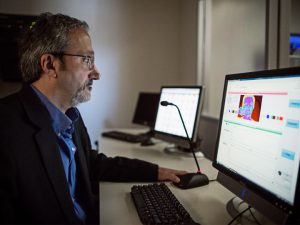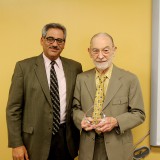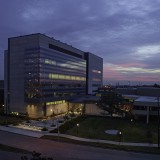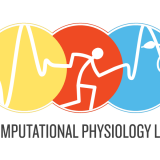Researchers Find Hidden Micro-Stressors in Routine Driving

Ioannis Pavlidis, Eckhard-Pfeiffer Distinguished Professor of Computer Science, who led the University of Houston group.
Commuters around the world dream of ideal driving conditions every day, but they rarely get them. The traffic is often heavy and gets worse when the weather turns sour. Light traffic and good weather are usually perceived as factors for a stress-free commute. Alas, researchers from the University of Houston and the Texas A&M Transportation Institute found that even under such ideal conditions, daily driving is stressful to many people, and for intriguing reasons.
In a study published in the journal IEEE Transactions on Affective Computing, researchers report that people with a predisposition to anxiety exhibit a significantly higher heart rate when they drive as opposed to those who are not predisposed to anxiety. Anxious drivers had a heart rate about five beats per minute higher than non-anxious drivers, under similar conditions.
The study’s researchers also found drivers’ heart rate increased significantly with car speed. Drivers moving at 65 mph had a heart rate of about four beats per minute higher than drivers moving at 25 mph, under similar conditions. In both cases, the observed cardiovascular activation was linked to sympathetic activation, that is, to stress responses.
“These are substantial numbers that we would have never guessed”, said Ioannis Pavlidis, Eckhard-Pfeiffer Distinguished Professor of Computer Science, who led the University of Houston group. “Anxious people who commute at highway speeds experience, on average, heart rate elevation of nine beats per minute; this is every day for an hour or more, which is the typical commuting time in this country. It is an unexpected stressor that is hard to ignore because of its substantial effect and its repetitive nature.”
Both Mike Manser, senior research scientist and Robert Wunderlich, director of the Center for Transportation Safety with the Texas A&M group, emphasized that the reported stress effect was measured under good weather and light traffic, that is, ideal commuting conditions. “This sizeable stress effect stands to grow even bigger, as the conditions get worse”, they said.
The researchers conducted the driving study with a new affective computing method they call NUBI, short for Naturalistic and UBIquitous. The researchers said they recruited volunteers from Texas, where most people commute daily, the weather is usually good and traffic conditions are ideal in mid-size cities. All the volunteers were young (mean age 27), healthy and experienced drivers.
Monitoring was completely unobtrusive. For a week, every few seconds the drivers’ heart rate was monitored through their own Apple Watches, while their driving data was monitored through OBD II devices, popular with car insurance tracking programs. The volunteers also had to respond to daily psychometric questionnaires they received via text messages when they were not driving. Momentary weather and surrounding traffic data corresponding to the volunteers’ driving and heart rate data were extracted via open internet sources based on the drivers’ GPS signal. The researchers also monitored the volunteers during their non-driving hours to establish the uniqueness of any driving effects.
“Across the state, we were shadowing the participants’ real-lives moment by moment for a week,” Pavlidis said. “This is the beauty of a NUBI driving study – you can monitor participants hundreds of miles away and get insights into their natural driving and non-driving behaviors.”
The resulting data set was huge, including 77 hours of driving and 915 hours of non-driving observations, expressed as nearly four million rows of multimodal information, which were analyzed with machine learning and statistical models.
The results of this study follow the results of an earlier study by the same researchers, who reported that certain people experience significant stress even in minute acceleration events, such as stop and go traffic. It appears there are cohorts in the population for which even trivial driving is stressful. These daily micro-stressors were not known or suspected thus far, because NUBI-style studies with unprecedented access to drivers’ internal and external state were not feasible until recently.
“Because driving is ingrained into people’s lives, even individuals who exhibit the said stress responses are not consciously aware of them. Nevertheless, the responses are there, they are substantial and their long-term implications are unknown,” said Pavlidis.
For the short term, these micro-stressors appear to overload the drivers who experience them, because for similar itineraries, afflicted drivers consistently report being more tired than non-afflicted drivers, he added. Collectively, the study’s long- and short-term results have potential lifestyle, safety and insurance implications, the researchers noted.
See the original at: Researchers Find Hidden Micro-Stressors in Routine Driving – University of Houston (uh.edu)














